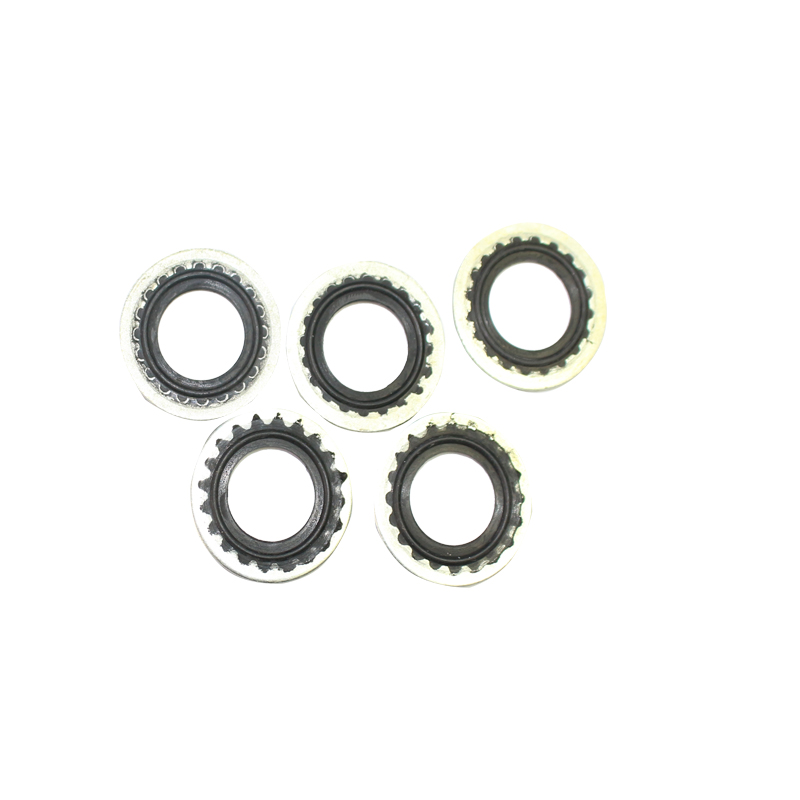Sump Nut Washer for Optimal Engine Performance and Maintenance Solutions
Understanding the Importance of Sump Nut Washers
In the world of mechanical engineering and maintenance, the significance of every component cannot be overstated. Among these components, the sump nut washer is often overlooked yet plays a crucial role in ensuring the reliability and efficiency of various systems. This article will explore the function, types, materials, and applications of sump nut washers, highlighting their importance in both industrial and residential settings.
What is a Sump Nut Washer?
A sump nut washer is a flat washer that is typically used in conjunction with a sump nut to secure and seal connections in various applications. Sump nuts are commonly found in oil pans, water tanks, and other fluid-holding containers. The washer is designed to provide a smooth surface for the nut to be tightened against, preventing leaks and ensuring a secure fit.
Function and Benefits
The primary function of a sump nut washer is to distribute the load of the nut over a larger surface area, reducing the risk of damage to the connected parts. When a nut is tightened, it exerts a significant amount of force, which, if concentrated in a small area, can lead to deformation or failure of the components. The washer absorbs this force and helps maintain the integrity of the connection.
Additionally, sump nut washers help create a seal that prevents fluids from leaking out. This is especially important in automotive applications where oil leaks can lead to engine damage or failure. By forming a tight seal between the sump and the nut, these washers help ensure that systems operate efficiently and safely.
Types of Sump Nut Washers
Sump nut washers come in various types, each designed for specific applications
. Some of the most common include1. Flat Washers These are the most basic type of washer, providing a simple surface for load distribution. They are used in countless applications due to their versatility.
2. Lock Washers These washers have a unique design that helps prevent the nut from loosening over time. They are ideal for applications that experience vibration or cyclical loads.
3. Sealing Washers These washers incorporate a rubber or silicone seal to provide an additional layer of leak protection. They are commonly used in plumbing and automotive applications where fluid containment is critical.
sump nut washer

Materials Used
The material of a sump nut washer is crucial to its performance and longevity. Common materials include
- Steel High-carbon steel washers are often used for their strength and durability. They are particularly effective in high-load applications.
- Stainless Steel For applications that involve exposure to corrosive environments, stainless steel washers are preferred. They offer excellent resistance to rust and corrosion.
- Rubber Used in sealing washers, rubber provides flexibility and ensures a tight seal against fluids. It also absorbs vibrations, further enhancing the connection’s stability.
Applications
Sump nut washers find applications in a wide range of industries, including
- Automotive In vehicles, sump nut washers are commonly used in oil pans and transmissions. They prevent leaks and ensure that fluid levels remain optimal for engine performance.
- Plumbing In plumbing systems, these washers help seal connections between pipes and fixtures, preventing water damage and maintaining system integrity.
- Manufacturing Industrial machinery often employs sump nut washers to secure components in place, ensuring that equipment operates smoothly without leaks or failures.
Conclusion
In conclusion, while a sump nut washer may appear to be a simple and unassuming component, its role in achieving reliable and efficient mechanical systems cannot be understated. By distributing loads, providing sealing capabilities, and enhancing the overall integrity of connections, sump nut washers are essential for the effective functioning of various applications. Whether in automotive engines, plumbing systems, or industrial machinery, understanding the importance and functionality of sump nut washers can lead to better maintenance practices and improved system performance. As technology advances, the evolution of materials and designs will continue to enhance their effectiveness, making them indispensable in the engineering and maintenance toolkit.
-
The Ultimate Guide to Car Repair Kits: Tools and Essentials Every Driver Should Own
News Aug.01,2025
-
The Complete Guide to Oil Pan Gaskets: Sealing Engine Leaks the Right Way
News Aug.01,2025
-
Preventing Oil Leaks: A Complete Guide to Oil Pan Gaskets and Drain Seals
News Aug.01,2025
-
Everything You Need to Know About Oil Pan Gaskets and Drain Plug Seals
News Aug.01,2025
-
Essential for Car Owners: How to Use a Car Repair Kit to Deal with Minor Breakdown
News Aug.01,2025
-
Comprehensive Guide to Engine Oil Sump Gaskets and Related Seals
News Aug.01,2025
-
The Ultimate Guide to Boat Propeller Bearings and Trailer Wheel Bearings
News Jul.31,2025
Products categories















